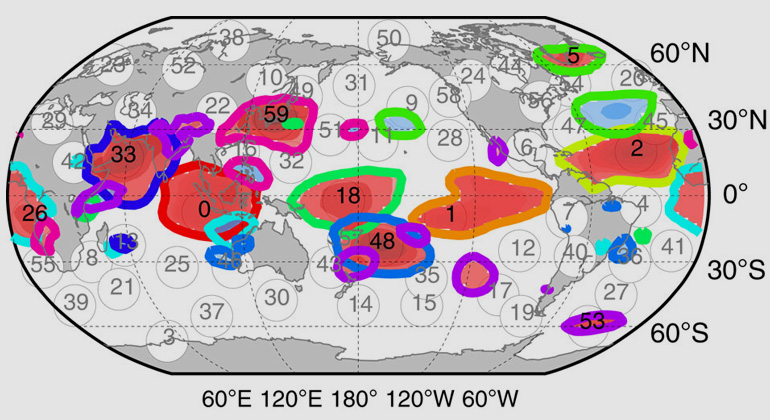Connections in the climate system
Distinguishing coincidence from causality.
Detecting how changes in one spot on Earth – in temperature, rain, wind – are linked to changes in another, far away area is key to assessing climate risks. Scientists now developed a new technique of finding out if one change can cause another change or not, and which regions are important gateways for such teleconnections. They use advanced mathematical tools for an unprecedented analysis of data from thousands of air pressure measurements. The method now published in Nature Communications can be applied to assess geoengineering impacts as well as global effects of local extreme weather events, and can potentially also be applied to the diffusion of disturbances in financial markets, or the human brain.
“Despite the chaos of weather you see a lot of correlations – for instance higher pressure in the East Pacific is often followed by lower pressure in the Indian Monsoon region,” says lead-author Jakob Runge of the Potsdam Institute for Climate Impact Research (PIK). “However, if you take a closer look, you find that many correlations are simply due to another process driving both regions, an important example being the solar cycle. So you use elaborate statistics to reveal such spurious links, find new indirect pathways, and step by step you reconstruct a network more closely representing cause and effect.” The new tool detects where major perturbations entering the climate system have the largest global effect, and via which pathways they are conveyed.
East Pacific, Indonesia, tropical Atlantic most important
The East Pacific, Indonesia and the tropical Atlantic are the regions most important for spreading and transmitting perturbations, the scientists found. One reason is that in these regions particularly huge air masses rise high up in the atmosphere. So for instance warming in the East Pacific can disturb the Indian Monsoon, even though it is thousands of kilometers away. This can put at risk yields on which millions of small farmers and in fact large parts of the population depend.
“How to robustly distinguish coincidence from causality in complex nonlinear systems has long been a riddle,” says Jürgen Kurths, co-author and head of PIK’s Research Domain Transdisciplinary Concepts and Methods. “Conventional approaches, based on pairwise association measures, in some cases showed good results. Yet these methods are rather limited. You can compare it to multiple organ failure in the human body – a real puzzle for the doctors. We’re glad that we can now present a new approach to understanding the connections, which is the basis for ideally making the whole system more resilient.”
Source
Potsdam Institute for Climate Impact Research (PIK) e. V. | 2015








